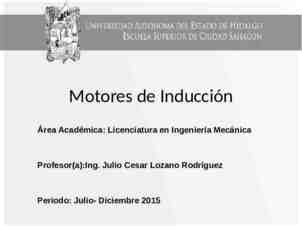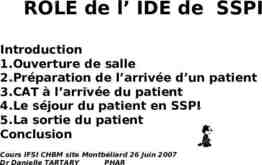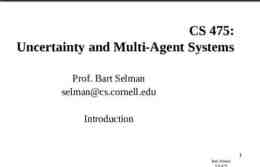+ Suffragette Surgeons of WW1 Endell St Military Hospital
18 Slides7.10 MB

Suffragette Surgeons of WW1 Endell St Military Hospital

Women in the 1900s In 1900, society believed that men and women had different roles A woman's place was in the home; running the household and caring for children Some women worked in factories but they were usually from poor families Men Women

Women's Rights In 1900 the country was run by men. Women had no say on issues they felt related to them, such as divorce rights, better working conditions and education

Women’s Rights Marriage From 1857, women were allowed to divorce their husband if he harmed her but divorce was costly and restrictions meant women were unable to work to support their family Property Married women were allowed to own property and to keep their own earnings in 1882. Before this, everything a woman owned went to her husband upon marriage

Women’s Rights Education Most women were not educated past the age of 11 and had little access to higher education with only a few universities allowing women to attend Employment Work opportunities for women were improving in 1900 and it was becoming socially acceptable for women to become nurses and teachers, but most women were poorly paid and were not allowed to work after marriage

Women and Politics Women wanted to be able to vote to have their say in how society was run Groups of women and some men began to meet to campaign for the vote. These were known as Suffrage Societies They worked peacefully to get women the right to vote, but Parliament ignored them Campaign: A series of co-ordinated activities for some purpose

Women’s Social and Political Union (WSPU) The WSPU was founded by Emmeline Pankhurst and her daughter Christabel in October 1903 in their Manchester home They were known as the Suffragettes and were a militant women's campaign group that were determined to make the government take notice Militant: Aggressive, hostile, violent or destructive behavior in support of a cause

What did the Suffragettes do? Held mass-meetings, marches and demonstrations Interrupt debates in Parliament But when they were still not given the vote. They began to chaining themselves to railings Smashing Were windows and set post boxes on fire arrested and restrained by police during demonstrations outside Parliament

Further Action In 1909 the suffragettes who had been imprisoned started going on hunger strike, and were then force fed. In 1910 when they were still not given the vote They badly damaged the house of the Prime Minister, David Lloyd George In 1913 the government decided those on hunger strike in prison were released when they were ill and arrested again when they were well to avoid force feeding. This was the ‘Cat and Mouse Act’

The First World War When the war broke out in 1914, the Suffragettes announced that they would stop political activity and help the war effort Two former members of the suffragettes, Louisa Garrett Anderson and Flora Murray, formed the Women’s Hospital Corps to care for soldiers wounded in the war But the women were told “My good lady go home and sit

Suffrage Military Hospital But. Female doctors were only allowed to treat women and children The war office refused to employ women doctors in war zones Instead their help was accepted in France, and they set up and run two hospitals for injured soldiers

Endell St Military Hospital After they had proven their abilities to the war office, the women were invited back to England, to run a large military hospital in the centre of London The Endell Street Military Hospital, was open from May 1915 to the end of 1919 It was entirely staffed by women, and the only women’s unit run by suffragists, it was one of the most remarkable hospitals of the war

Nina Last – hospital orderly Nina Last worked as a hospital orderly at the Endell Street Military Hospital Her duties included working in the linen room where she organised the cleaning of the bed sheets. Often the sheets would have lice on them which the soldiers had brought back from fighting in the trenches. If new wounded soldiers arrived, she had to help Her diary describes “I was always told to be prepared for conveys of wounded arriving from the front. A loud bell would go suddenly at any hour of darkness, generally around midnight. We were up in a second and incredibly quickly stuffed our nightdresses into our dark blue bloomers, popped on our uniform, caught up our hair in our bonnets and reported down in the yard ”

The Legacy of the Endell Street Military Hospital In October 1919 Murray and Anderson received an order to close the hospital and soon all remaining members of staff were demobilised, with Flora Murray noting that the women went their separate ways ‘reluctantly and with sorrow’. The building was taken over by the Office of Works for a number of uses, from storage to laboratory research.

Women in Medicine after WW1 After the war, medical women’s career prospects remained no better than they had been in 1914. Their future work was again restricted to appointments at a women's hospital, or marriage. None of the 37 doctors who served at Endell Street went into general surgery or medicine, the areas in which many of them

The legacy of the Hospital was the breaking of the taboo on women being doctors for men. They had shown themselves to be professionally capable of running hospitals and of competently treating severely wounded soldiers under stressful wartime conditions as competently as their male colleagues. The hospital building was demolished to be replaced in the 1980s by a new housing block, renamed Dudley Court, but the architectural footprint of the original building’s courtyard remains to this day on Endell Street in Covent Garden.

Images and Production The Women’s Library, LSE Library Collections Eleanor Roosevelt NHS, National Park Service, Cook-Dickerman Collection Produced by digitaldrama.org 2018

Emily Wilding Davison and the Suffra gette banner - Museum of London Suffragettes - Stories from Parliamen Suffragettes - Stories from Parliamen t Part 1 Further viewing Click on the links right to see videos about the Suffragettes and links to further teacher resources t Part 2 Teaching resources from Parliament UK Education






